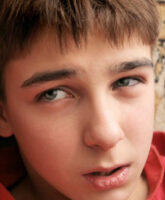ADHD / ADD
(ADHD) Attention Deficit Hyperactivity Disorder and (ADD) Attention Deficit Disorder

ADHD is a common neurobehavioral disorder of childhood.
Statistically, nearly 10% of children in the United States, ages 4 to 17 years of age, have been diagnosed with ADHD. That’s well over 5 million children in the United States alone. Some experts believe that the actual number of children suffering from these conditions is closer to 15 million. In addition, two to three times as many boys are affected in comparison to girls.
F.A.Q. – Is there a difference between ADHD and ADD?
Answer: Officially, the correct diagnostic term is currently ADHD (Attention Deficit Hyperactivity Disorder). The term ADD is no longer “officially” correct.
Furthermore, ADHD is broken down into three types:
- Combined Type
- Predominantly Inattentive Type
- Predominantly Hyperactive Impulsive Type
ADHD, ADD on Ask Dr. Ron Radio
Regardless of the terminology being used, the following are commonly seen symptoms:
Signs of ADHD and ADD
- Difficulty concentrating and sitting still
- Easy distractibility
- Impulsive behavior
- Struggling to complete tasks
- Tendency to overlook details
- Easily frustrated by complex tasks
- Poor listening skills
- Difficulty recalling information
- Periods of melancholy or depression
- Hypersensitivity to sounds and sensations
- Annoyed or irritated by textures of clothing and/or food
- High anxiety levels

Drug Based Treatment – ADHD/ADD (it’s all about controlling the symptoms)
An common allopathic (drug) treatment for ADD and ADHD is the prescription of Class 2 psychotropic drugs. In an attempt to control the symptoms, regular doses of methylphenidate, more commonly known as Ritalin®, or a similar drug, is prescribed.
These drugs are classified as schedule II controlled substances, and as such produce similar effects to amphetamines and cocaine. Side effects, including personality changes and permanent changes to the brain, cause many parents to look for alternatives.

Nervous System Based Treatment – (it’s all about correcting the cause)
ADD and ADHD are classified as neurobehavioral disorders and as such have a distinct neurological component.
At Cherubino Health Center we have been able to help both children and adults with the use of our nervous system based approaches and treatments.
Sensory motor techniques such as those listed below, offer an effective non-drug approach for people suffering from these conditions.

Ask a Question or Request an Appointment
– Contact Us –
And one of Staff members will be glad to answer your questions or make an appointment for you.
Links associated with these conditions:

